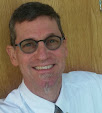New York : Penguin Press, 2006.
450 p. ; 25 cm.
I've been wanting to read Michael Pollan's book for quite a while, probably since hearing him interviewed on radio (or TV) back in 2006 when the book first came out. I remember being most intrigued by his findings that, thanks to the industrialization of food, corn has become the basis for nearly all food in the US, and that what is sold as "food" is often a chemically assembled/reassembled mix of corn, fats, salts, sugars, and "natural" flavorings that are rarely healthy or nutritious. Well, living in Illinois - the land of corn - (OK, coming in 2nd place to Iowa) and the home of the villainous "food" giant ADM and "food" behemoth McDonald's, I simply had to read Pollan's book. I wasn't disappointed.
Pollan's book is an interesting read on many counts - as science, natural history, social history, and culture. It is a book that offers a rare glimpse into the extremely destructive nature of agriculture/agribusiness as it is practiced in the US - and the many ways that the worst practices of agriculture (monoculture and complete dependence on fossil fuel) are encouraged and enforced by US law and policy.
His book also looks at agricultural practices that are beneficial to humans and the environment - including the importance of local foods. As a mostly vegetarian eater, I really appreciated his interesting insights into what is good and bad about the "organic" food supply as it has evolved in the US, particularly as it has become a huge multi-billion dollar industry itself. I also found a lot to think about regarding the positive benefits of having livestock on farms - livestock that are allowed to pasture and participate in a rich multi-cultured farm, not livestock that are raised in large-scale confinement operations.
For the leisurely non-fiction reader, the book is a bit on the long side and took me awhile to finish, but I was really pleased when I realized that our library also has an edition of the book for younger readers (still weighs in at about 300 pages) that is really excellent. The young reader's edition has a lot of great photographs and graphics that frankly would have been wonderful in the adult version, so I can definitely recommend it as well.


No comments:
Post a Comment